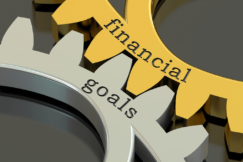Few jewelry items carry as much symbolic and financial weight as the diamond ring. Historically, diamonds have been celebrated for their unmatched beauty and durability, making them a significant emblem of romantic commitment.
However, in contemporary discourse, the conversation often oscillates between viewing diamond rings through the lens of timeless romance or as a prudent financial investment. As the dynamics of the diamond market evolve and societal values shift, understanding the multifaceted value of diamond rings—balancing emotional significance with economic considerations—presents a compelling exploration.

This juxtaposition invites a deeper inquiry into what truly constitutes value, in both sentimental and monetary terms, in the context of diamond rings.
The Historical Significance of Diamonds
Diamond rings are often hailed as timeless symbols of wealth and love, and have held a profound significance throughout history, shaping economies, cultures, and personal narratives across the globe. This gemstone’s allure is not merely a product of its physical attributes—its brilliance, durability, and rarity—but also its ability to encapsulate human emotions, aspirations, and achievements.
Historically, diamonds have been intertwined with the notions of invincibility and eternal love, tracing back to ancient civilizations where they were believed to possess mystical powers. Kings and queens adorned themselves with diamonds to signify their divine right to rule, while warriors wore them into battle for protection and strength. In the Renaissance, diamonds became central to marriage rituals, symbolizing unwavering commitment and purity.
The transformative journey of diamonds, from deep within the Earth’s mantle to cherished personal adornments, mirrors humanity’s enduring quest for beauty and meaning. Beyond their physical beauty, diamonds carry the weight of centuries of human desires, achievements, and emotions. They encapsulate stories of discovery, conquest, and love, transcending their material value to become emblematic of the profound human need to express, connect, and remember.
Evaluating Diamond Prices Over Time
Understanding the multifaceted history and cultural significance of diamonds naturally leads to an exploration of their economic journey, marked by fluctuations in value and desirability over time. The valuation of diamonds has not followed a straightforward path; it is entwined with complex factors such as rarity, market demand, mining advancements, and even geopolitical shifts. Historically, the discovery of new diamond sources has periodically adjusted prices and accessibility, while technological innovations in cutting and polishing have enhanced the gem’s allure, impacting its market value.
The 20th century introduced significant changes in the De Beers company’s marketing strategies, famously encapsulating diamonds as synonymous with eternal love and commitment. This branding evolution played a pivotal role in embedding diamonds deeply within cultural traditions, thereby influencing their perceived value beyond mere financial appraisal. Moreover, the introduction of lab-grown diamonds has sparked debates on value, authenticity, and environmental impact, further complicating the economic landscape.
Reflecting on diamond prices over time reveals a narrative that transcends simple supply and demand economics. It’s a tale interwoven with human desires, technological progress, and shifting cultural norms, illustrating that the value of diamonds is as multifaceted as the stones themselves.
Emotional Value Versus Financial Investment
The allure of diamond rings often transcends their monetary value, embodying deep emotional significance that challenges traditional notions of financial investment. This dichotomy between the emotional and financial worth of diamond rings presents a complex landscape for both buyers and sellers.
On one hand, the purchase of a diamond ring can be seen as an investment in a tangible asset whose value might appreciate over time. On the other, its value is deeply intangible, rooted in the personal narratives, memories, and emotions it symbolizes.
Delving deeper, the emotional value imbued in diamond rings often eclipses their financial investment aspect, especially in the context of engagements and marriages. These occasions mark pivotal moments in people’s lives, rendering the ring a symbol of love, commitment, and continuity. Unlike traditional investments, the return on investment for a diamond ring worn as a symbol of love is measured in years of companionship and the legacy it represents within families.
Navigating this landscape requires a nuanced understanding that while the financial value of diamonds can fluctuate, the emotional value they hold for individuals can remain immeasurably high. This interplay between the emotional and financial aspects challenges individuals to consider what they truly value in the acquisition of such pieces.
Trends Influencing the Diamond Market
Exploring the landscape of diamond rings further, several trends have emerged that significantly influence the market dynamics and consumer preferences. Notably, the rise of ethical consumerism has shifted interest towards sustainably sourced diamonds. This movement not only reflects a growing public awareness of the environmental and social impacts of diamond mining but also challenges the industry to adopt more transparent and responsible practices. As a result, lab-grown diamonds have gained popularity, offering a conflict-free alternative that appeals to the environmentally conscious buyer without compromising on the sparkle and allure that diamonds are known for.
Additionally, technological advancements have played a pivotal role in transforming the diamond market. Cutting-edge technologies in diamond cutting and grading have enhanced the quality and value of diamond rings, allowing for more precise cuts that maximize brilliance and fire. This has elevated consumer expectations, with buyers now seeking out pieces that not only symbolize love and commitment but also reflect a high level of craftsmanship and innovation.
These trends underscore a significant shift in how value is perceived and sought after in the diamond ring market, with implications for both consumers and the industry at large.
Making the Right Choice for You
Selecting the perfect diamond ring is a deeply personal decision, one that encompasses both the tangible aspects of quality and design, as well as the intangible elements of meaning and emotion. It requires a reflective approach, weighing the significance of the ring against its material value, and understanding how it aligns with your personal values and relationships.
In making the right choice, consider not just the current trends and market values, but also the story and sentiment behind the ring. A diamond’s worth isn’t solely determined by its cut, color, clarity, and carat weight—its true value also lies in what it represents. Is it a symbol of love, a family heirloom, or an investment piece? This nuanced perspective encourages a broader view, where the ring’s emotional and financial aspects are not competing but are complementary factors.
Furthermore, understanding the ethical sourcing and sustainability of diamonds adds another layer to making an informed decision. Choosing a ring that aligns with ethical practices reflects a commitment to values beyond the immediate allure of the diamond.
In essence, the right choice is one that resonates with your deepest values, encapsulating both the beauty of the gem and the depth of its meaning.
Conclusion
In conclusion, the valuation of diamond rings transcends mere financial metrics, encapsulating a complex interplay between historical significance, market trends, emotional value, and investment potential.
As societal norms and economic conditions evolve, so too does the perception of diamonds, challenging individuals to navigate the multifaceted dimensions of their worth.
Ultimately, the decision to invest in a diamond ring demands a nuanced understanding of its symbolic and monetary value, urging a reflective consideration of personal values and financial pragmatism.



